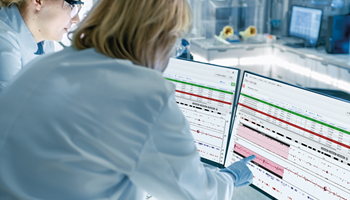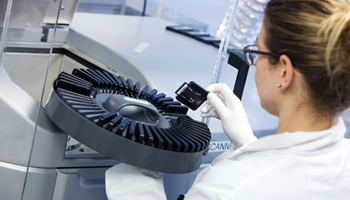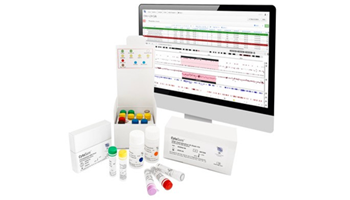Oxford, UK – 21 May 2009. OGT announces that the Center for Human Genetics at Katholieke Universiteit Leuven, Belgium, has begun assessment of its CytoSure® arrays for use in prenatal diagnostic research. The Center, one of Europe’s largest clinical diagnostic facilities, already uses CytoSure arrays for post-natal research applications and is now exploring their potential for prenatal screening.
The pilot study is due to last 12 months and will use the arrays alongside existing screening techniques for selected prenatal screens. Researchers from OGT are collaborating closely with the Center’s constitutional cytogenetics laboratory headed by Professor Joris Vermeesch. Joris explained: “We have worked closely with OGT for some time now and have a good working relationship. This particular project is a clinical study with a strong research component. We are investigating the extent to which high resolution aCGH can improve diagnosis in selected cases that show normal karyotype results but abnormal developmental phenotypes. In addition, for research purposes, we are cataloguing unknown genetic abnormalities to help us better understand genetic variation in the future.”
John Anson, Research and Development Director at OGT, added: “By bringing together OGT’s expertise in microarray development and the Center’s extensive experience in diagnostic testing, it is hoped that the higher resolution of the CytoSure arrays will enhance the understanding of genetic variations. This should ultimately improve prenatal services in Europe by offering better clinical diagnosis and genetic counselling.”
In Europe, prenatal diagnostic testing is conducted only in cases where healthcare professionals believe there to be a high risk of complications, or where ultrasound scanning has shown abnormal development. The tests must be performed on material taken from amniocentesis and chorionic villus sampling, and so are invasive and unnecessary for the majority of pregnancies.
Currently, diagnostic testing is performed using a technique known as karyotyping, which involves staining of chromosomes with a range of colorimetric or fluorimetric dyes sensitive to the sequence of DNA, and then analysing the resulting patterns. This technique allows detection of additional copies of chromosomes and large scale copy number variations in the region of 5-10 megabases or more. By comparison, aCGH provides much higher resolution sequence data, potentially offering far greater insight into the underlying genetic cause of abnormal development.
About OGT
OGT, a Sysmex Group company, is a leading global provider of clinical and diagnostic genomic solutions that are created for scientists by scientists - including CytoCell®, CytoSure® and SureSeq™ ranges of FISH, microarray and NGS products. The company is dedicated to creating products that enable researchers and clinical decision makers to reach the right care decisions for each patient, every time. OGT strives to unlock the future of genetic clinical care with a commitment to working in partnership with its customers - not only by sharing its expertise of 25 years at the forefront of genetic endeavour, but also by working closely with scientists to understand their unique challenges, and to customise its approach to meet their exact needs. Dedicated to improving clinical care, OGT believes that through partnership—together—we’ll achieve more.
For more information on the Company, please visit our website at ogt.com
CytoSure®, SureSeq™ and myProbes®: For Research Use Only, not for use in diagnostic procedures. CytoCell: Some products may not be available in your region.
About Sysmex Corporation
Sysmex Corporation is a world leader in clinical laboratory systemization and solutions, including laboratory diagnostics, laboratory automation and clinical information systems. Serving customers for more than 50 years, Sysmex focuses on technological leadership in diagnostic science and information tools that make a difference in the health of people worldwide. The company is also exploring emerging opportunities in the life science field. Its R&D efforts focus on the development of high-value-added testing and diagnostic technologies that are innovative, original and optimize individual health. Sysmex also seeks to leverage its state-of-the-art technologies for cell, gene and protein analysis. The company, headquartered in Kobe, Japan, has subsidiaries in North America, Latin America, Europe, the Middle East, Africa, China and Asia Pacific and employs more than 9,000 employees worldwide. Sysmex Corporation is listed in the top tier of the Tokyo Stock Exchange.
For more information about Sysmex Corporation and its affiliate companies, please visit www.sysmex.co.jp/en/.

Robust panel enables accurate and comprehensive constitutional genetic aberration screening in one assay.
Read
Paper published in npj Genomic Medicine demonstrates identification of more reportable CNVs with CytoSure® v3 vs traditional array design.
Read
CytoSure™ NGS – Combining the benefits of microarrays and NGS in a single assay.
Read